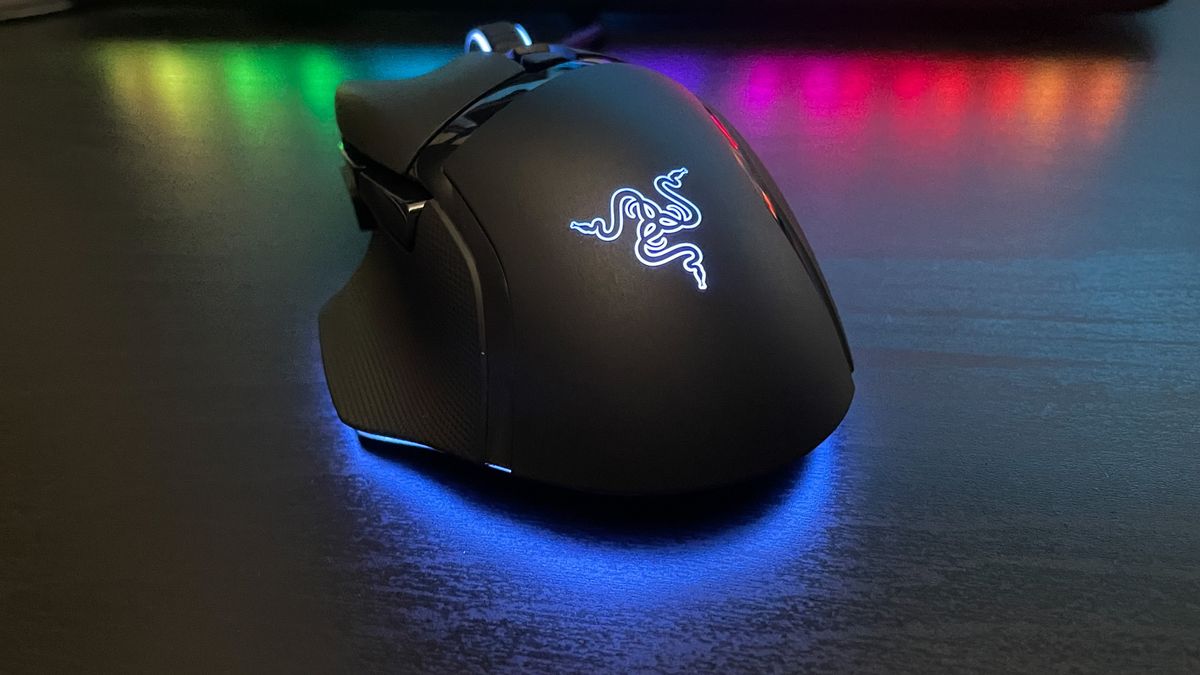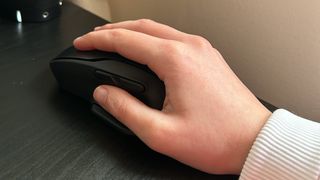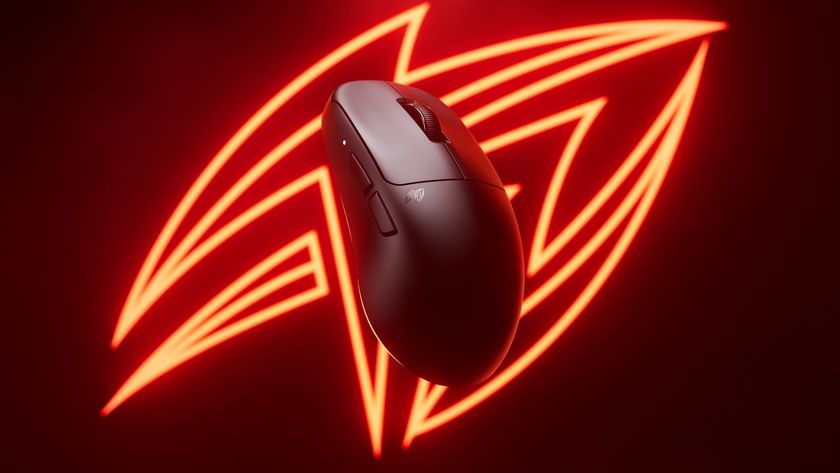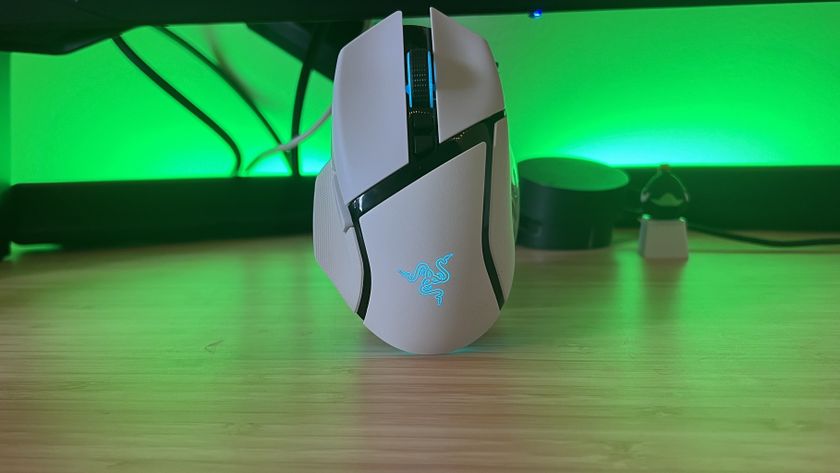How to choose a gaming mouse: everything you need to know to find the right pointer
How to find the right tool for the job

The question of how to choose the right gaming mouse comes down to what you play and how you play it. There are a multitude of pointers all vying for your attention these days, with lofty sensor promises, flashy marketing reels, and plenty of numbers flying around. Many of the best gaming mouse models can do it all, but they also fetch a pretty penny for the privilege. Finding out what you actually need from your gaming mouse will help you narrow your search considerably, and can save you some cash by avoiding extraneous features.
That's because those who typically play fast-paced shooters or even more precise action games aren't going to need a wealth of buttons at their disposal. Similar, MOBA or MMO players shouldn't worry too much about slimming down the weight of their device. Of course, if you mix and match your genres often, you'll want a mouse that strikes a nice balance between the above extremes, still without loading on features you won't use. Of course, if you're on the hunt for a left-handed gaming mouse, much of the same applies, though unfortunately the number of options open to you is a little smaller.
What do you play?
When you first start choosing a gaming mouse, you'll notice there are a wide variety of shapes and weights available. That's because certain designs are tailored to different genres and playstyles. Rather than focusing on brand, wired or wireless capabilities, or RGB, it's worth taking note of the weight, number of additional buttons and sensor quality based on what you will actually be using the mouse for.
First person shooter



- Prioritize: light weight and high quality sensor
- Deprioritize: more than two additional buttons
- Recommended models: Razer Viper V2 Pro, Logitech G Pro X Superlight, Razer Viper Ultimate, MSI Clutch GM31
If you play first person shooters the most, we'd recommend opting for a lightweight (90g or less) device with two side buttons, a high quality sensor (check sensor reviews rather than relying on a DPI or CPI count), and a skinny form factor. You'll need to be able to fling this device quickly across a desktop to make those twitch-reaction shots, which is where the weight and shape come in, but to also retain a solid level of control during those more frantic moments (hence the speedy, high quality sensor).
You won't need more than two side buttons for the majority of first person shooter or even general action titles, so adding more will quickly prove unnecessary and will add to the overall weight of your device as well. If you're leaning more on the action side than hardcore FPS, though, you will find plenty of gaming mice offering an additional sniper button which can be handy for slowing down your DPI tracking on the fly to make more precise manoeuvres.
Because you'll be focusing on speed here, a wireless connection is a boost to avoid cable drag. These days you won't notice the difference in response times between wired and cable-free devices, and the extra freedom afforded can come in handy when you're in a pinch. However, this will bump your price up considerably and it's by no means a priority when choosing an FPS gaming mouse.
At the top end of the spectrum, the Razer Viper V2 Pro and Logitech G Pro X Superlight both hit all these boxes with an extra air of luxury for $149.99 / £149.99. The Viper, however, is the best Razer mouse on the market right now (and just so happens to be the best wireless gaming mouse as well). That means it costs a little more than other models (though the previous generation Viper Ultimate model is available for much less these days), so if you're after something more affordable we'd recommend checking out the $69.99 / £59.99 MSI Clutch GM31 for a similar form factor.
Sign up to the 12DOVE Newsletter
Weekly digests, tales from the communities you love, and more
Action




- Prioritize: additional buttons, comfortable form factor
- Deprioritize: light weight, wireless connection
- Recommended models: Razer Basilisk V3, Razer Basilisk V3 Pro, Logitech G502 X, Roccat Kone XP
If you still need the speed of an FPS-first mouse, but without the sole genre focus, there's a little more wiggle room for extra features in the world of action gaming mice. This is where the vast majority of releases sit, typically offering two to six additional buttons, more comfortable ergonomic designs, and additional scroll wheel features designed to remain flexible across a range of different genres. Since the focus here isn't on full-turbo competition level speed you can afford a little extra weight in your device for the sake of these features. That means you can pick up sturdier build materials and allow for additional panels (like a thumb or pinky rest) for longer-lasting comfort.
You can easily get away with two buttons if you're playing action RPGs or single-player shooters. However, if you're looking to future proof yourself across a varied Steam library it's worth checking out pointers with between two and six extra clickers. You'll be playing from a wider pool of games, and each of those titles can have different requirements. That's also where the quality of the software on offer comes in. Chances are, as you tick through different games, you're going to need to adjust your settings regularly. We'd recommend checking out each brand's associated customization software to make sure you're getting an easy, intuitive experience that won't cause headaches when it comes time to rebind.
You'll still want to keep a snappy sensor here, but the good news is the vast majority of devices from reputable brands offer enough tracking juice under the hood to keep up. Similarly, a wireless connection isn't a must here, and considering you're generally packing more features than an FPS-first mouse, that price can climb quickly if you are thinking of cutting the cord.
The $69.99 / £69.99 Razer Basilisk V3 is our go-to for this middle of the road experience, however the Logitech G502 X is another premium option new to the market and the best Logitech gaming mouse on the market right now. Both options also come with wireless counterparts as well. The Roccat Kone XP is also an excellent wired-only option, especially for those looking to pack some unique RGB features.
MMO / MOBA


- Prioritize: additional buttons, ergonomic design
- Deprioritize: light weight, portability
- Recommended models: Razer Naga V2 Pro, Razer Naga Pro, Corsair Scimitar RGB Elite, SteelSeries Aerox 9
League of Legends, DOTA 2, World of Warcraft, and other MMO / MOBA titles all require a different approach. These item-heavy titles require far more buttons at your disposal, but the sacrifices you're making to get this level of control do mean you'll need to be sure you won't be using your mouse for too many other genres. MOBA-styled gaming mice can pack up to 12 side buttons for ultimate configurability, but often do so at the expense of weight, battery life, and price.
Instead, you'll want to centre your decision around that additional button action. Beyond making sure you've got enough clickers at your disposal, we'd recommend also making sure that the form factor and design are conducive to actually hitting all those buttons comfortably and reliably. That means you're going to be looking for a larger device overall, but one that still holds ergonomic considerations for longer sessions.
If you're concerned about locking yourself into a single genre (especially when these kinds of pointers can carry some hefty price tags), the Razer Naga series should be your first port of call. The latest model, the Naga V2 Pro, does come with its own $179.99 / £179.99 cost, but if you don't want to spend that much on the latest and greatest, you can also find the Razer Naga Pro for a little less. These devices allow you to switch the side plates, opening you up to different button arrangements for different genres.
However, if you're after a pure-MOBA / MMO device and don't want to spend on the possibility of other configurations, the Corsair Scimitar RGB Elite still holds the top spot and can be found for far less than its $75 / £75 MSRP. Plus, the SteelSeries Aerox 9 offers an excellent lightweight alternative if you do want to keep things nifty.
How do you play?
Even within the broad strokes of genre, gaming mice can still vary in their designs. That's why your grip style is so important. After all, there's no point splashing the cash on a high-end sensor and flyweight form factor if you're cramping after 20 minutes of use. There are three grip types to be aware of when choosing a gaming mouse; palm, claw, and fingertip. Each one requires a slightly different body shape to be able to maintain comfortably.
Palm grip

A palm grip is held with the full hand, resting completely over the top of the mouse. If you use a palm grip, you're best served by a larger mouse with a wide body for complete support. You also won't need to worry too much about the weight, as this grip is more about control and comfort than speed.
Claw grip

A claw grip positions the hand with the base of the mouse touching the base of the palm and the fingertips resting on the main and side buttons. A mouse designed for a claw grip will offer a medium width but still stay fairly lightweight. That's because your palm is resting on the sloped back of the mouse, providing a little extra control and reducing speed.
Fingertip grip

A fingertip grip removes your palm from the body of the mouse completely, relying fully on your fingertips for control. That means your mouse needs to be skinny with a low hump to avoid getting in the way, and lightweight enough to be manoeuvred easily.
Once you have a solid understanding of what you'll be playing and how you'll be playing it, you'll be ready to choose a gaming mouse that fits your style. Thankfully, brands like Razer, Logitech, Corsair, MSI and Roccat offer plenty of different price points across their ranges which means you'll be able to find an as affordable (or premium) device as your budget allows.
We're also rounding up all the latest cheap gaming mouse deals if you're after a saving. We're also bringing you all the best gaming mouse pads on the market so that your device of choice can truly shine.

Managing Editor of Hardware at 12DOVE, I originally landed in hardware at our sister site TechRadar before moving over to GamesRadar. In between, I've written for Tom’s Guide, Wireframe, The Indie Game Website and That Video Game Blog, covering everything from the PS5 launch to the Apple Pencil. Now, i'm focused on Nintendo Switch, gaming laptops (and the keyboards, headsets and mice that come with them), PS5, and trying to find the perfect projector.












